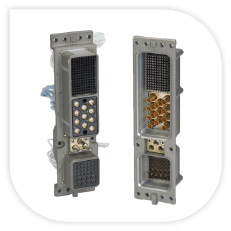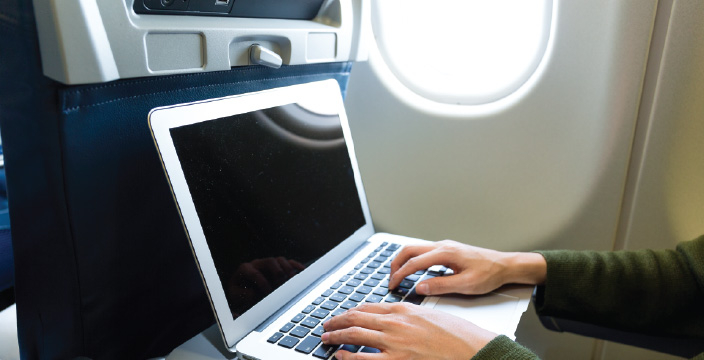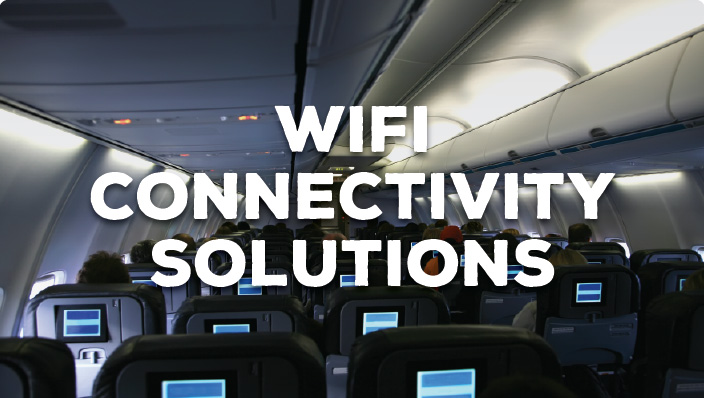Connecting Flights

Passenger expectations are determining the system requirements for airline connectivity. The challenge is delivering a data-rich experience that is similar to a home broadband service. Satellite-based Wi-Fi providers are working to provide Wi-Fi connectivity solutions to airlines that close the gap between in-fight Wi-Fi and home internet speeds.
With satellite based technology, an antenna on top of the aircraft connects to the closest satellite signal, and distributes the Wi-Fi throughout the cabin with an on-board router. Cross linked satellites orbiting the earth create the network for global coverage over oceans, airways, and the polar regions.
Currently, most in-flight connectivity is delivered with air-to-ground technology. Radio base stations on the ground transmit signals to beam-forming antennas on the lower fuselage of the aircraft, and the signal is distributed throughout the plane with Wi-Fi access points. Air-to-ground can mean unreliable and slow on-board internet connections due the loss of signal over oceans and limited bandwidth. Changing to satellite-based Wi-Fi doesn’t just mean improved in-fight entertainment services, but improved reliability for cockpit applications that can also utilize Wi-Fi for monitoring weather patterns and optimizing flight routes.
Given the performance differences between air-to-ground technology and satellite-based Wi-Fi, the airline industry is turning to aviation connectivity service providers that can deliver high-frequency Ku-band (12-18GHz) and/or Ka (26-40GHz) satellites for download speeds to the aircraft up to 70Mbps. Service providers need to consider type of frequency, capacity, and coverage for global flight paths, and are utilizing spot beam technology and frequency reuse to boost capacity and meet different traffic demands. The more frequencies available means more bandwidths, which results in more satellite solutions for connectivity.

So where does Radiall fit into this? Our connectors are integrated in black boxes called LRUs that sit in the avionics bay under the cockpit of commercial aircrafts. LRUs receive the signals transmitted by satellites. The LRUs are essentially computers that process signals coming from different areas of the aircraft including sensors and antennas. Internet signals received from an antenna are ultimately transmitted to a LRU computer through an Arinc 600 connector. The signal gets processed in the LRU and is sent to wireless access points (WAPs) that dispatches it across the aircraft. WAPs create the wireless local area network on the aircraft that enable passengers to make phone calls, stream video, and surf the internet. This onboard hardware traditionally had the capability to deliver Wi-Fi speeds faster than the exterior antennas were capable of receiving. Now that service providers are using satellites to deliver internet speeds, this robust equipment won’t be constrained.
Radiall’s ARINC 600 connectors are integrated in block boxes on the aircraft and meet the challenges of the aviation industry by delivering the reduced cost and weight required for high performance aeronautical equipment. Arinc 600 connectors typically used for on-board Wi-Fi typically include fiber optics or quadrax and carry high data rates.
Why customers choose Radiall ARINC 600 connectors:
- Most comprehensive Arinc 600 high speed data solutions (rather than choice of insert: includes quadrax and fiber optics inserts and contacts)
- RoHS options and Environmental Surtec 650V Reach compliant solution
- Mix and match selective plated contacts and cost effective inserts within the same connector to provide additional cost savings
- Environmentally friendly and reduced cost up to 20%
- High reliability (signal integrity) => Essential for the availability of the service


